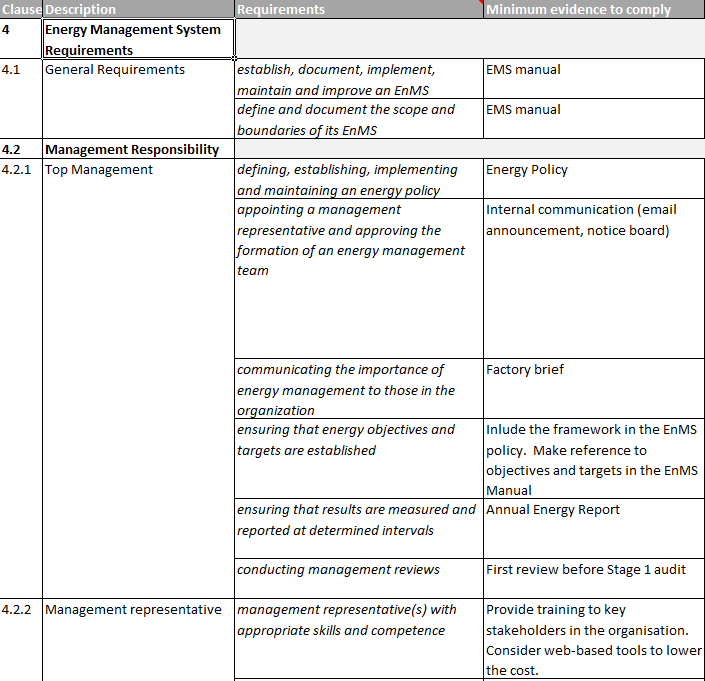Over a week ago I shared my first post (out of five) regarding ISO Systems implementation. For those who have missed it, you can click the link below to read the article.
A practical guide to ISO 9001 /14001 /50001 /xxxx implementation – Part 1/5
To cut a long story short, I have been tasked with implementation of ISO 50001 (Energy Management System) in a medium-size manufacturing business. It wasn’t a particularly exciting task so to make the most of it I have decided to share the entire journey with you.
My first post was an introduction to the project and a draft plan. Today I can share with you the first update on the implementation.
Before I jump straight into the work that has been done here is a quick reminder of the plan that You are going to follow:
- Introduction – that’s done, click here to read the post
- Gap Analysis and initial action plan – YOU ARE HERE
- Stage 1 audit
- Stage 2 audit
- Post-certification feedback
Bonus content for You
As promised earlier I will give You access to all critical documents that have been used in the implementation process of ISO 50001.
Remember – all documents share here can be used with ANY other ISO Standard implementation.
Gap Analysis and initial action plan
What you are going to witness here is the most brutal and honest approach to gap analysis. It’s so simple that some of you might find it surprising.
I have used this model successfully throughout my professional career so why wouldn’t you?
Here is what you need:
- Copy of the ISO Standard
- Highlighter Pen
- Pencil
Step 1 – highlight ALL requirements for documents, records etc.
Get your highlighter and read the text carefully. You will be looking for action related content. Keywords and phrases to watch out for:
- Define / defined
- Document
- Reviews
- Records
- objectives
- Targets
- Results
- Communication
- Report
- Intervals
- Control

It makes sense to make comments to some of the highlights regarding your current state or potential actions. Usually, your first thoughts and ideas will bring the most benefit in the later process.
Maximise your time and effort by taking quick notes. Use them to form your action plan.
Step 2 – Gap Analysis
The best approach to a gap analysis is to follow a good example and apply the same approach to your project. Of course, you can spend time researching learning materials to become an expert in gap analysis, but You are here to get a practical and quick solution aren’t you?
Here is the snapshot of the gap analysis for the ISO 50001

Step 3 – Action Plan
You have completed the gap analysis. Get all key stakeholders around and agree on the action plan.
TIP – it is virtually impossible to create a 100% bulletproof gap analysis. Why? I can guarantee you that there always be an auditor who will interpret your efforts against your vision and approach. The most important thing is to get the gap analysis done and kick off the action plan. Documents will always play a lesser role than the actual job done by the people.
The most effective action plans are the ones that help get the job done. It’s simple as that.

Step 4 – JFDI
You and your team have developed an action plan. Now it’s time to get on the road of implementation. This is the part where You have to take the lead and ensure everyone delivers.
As promised earlier I have prepared a Gap Analysis and Action Plan document. It’s is fully editable excel spreadsheet that you can DOWNLOAD for FREE from the Premium Library. Click the link below and kick off your ISO Implementation today.



21 Comments
Leave your reply.